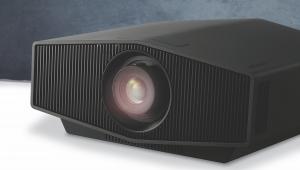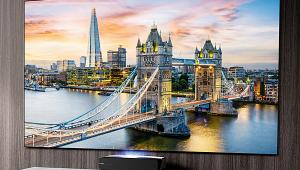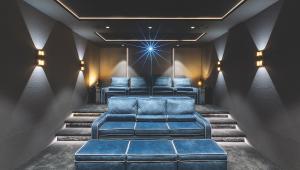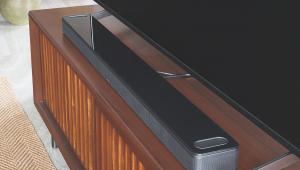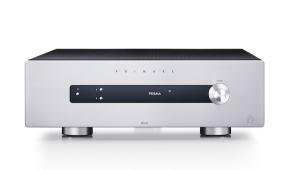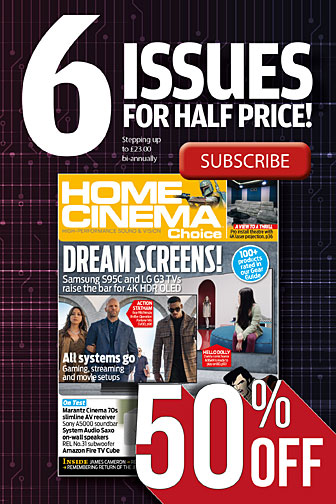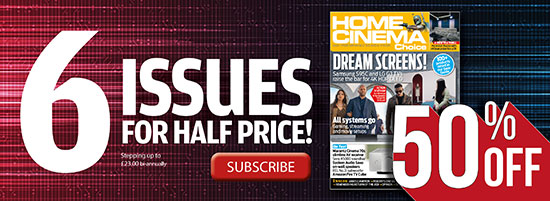Optoma HD30 review
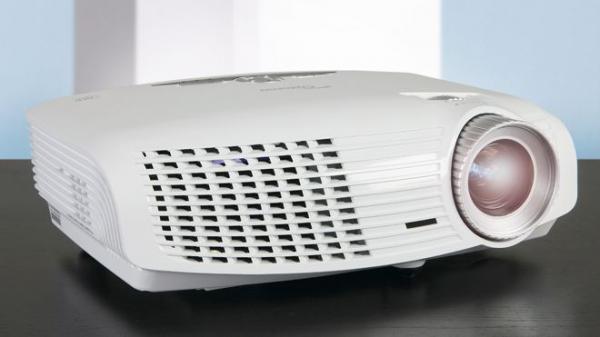
 While there are a plethora of PJs available for around a grand, most will ask you to make some sort of sacrifice when it comes to visual performance, usually in terms of resolution or black level. After all, something has to give to hit that price point. Seemingly this isn’t the case with Optoma’s HD30 Full HD DLP offering. This precocious single-chipper throws an image that looks like it comes from a cabinet costing twice as much.
While there are a plethora of PJs available for around a grand, most will ask you to make some sort of sacrifice when it comes to visual performance, usually in terms of resolution or black level. After all, something has to give to hit that price point. Seemingly this isn’t the case with Optoma’s HD30 Full HD DLP offering. This precocious single-chipper throws an image that looks like it comes from a cabinet costing twice as much.
The unit itself is pleasingly domesticated, with a neatly designed gloss white cabinet sporting grey/silver accents. It verges on fashionable. Installation is a breeze, particularly if you intend to park it on a coffee table in front of a white wall. There are both horizontal and vertical image shift options, driven by simple onscreen arrows, plus vertical keystone correction should you need it. Zoom is restricted to 1.2x, however.
Connectivity comprises two HDMI inputs, PC VGA, composite and analogue audio. There’s also VGA out and RS232. Yet while the HD30 can obviously function in a corporate environment, this is clearly a home entertainment product. The menu is driven by familiar icons, such as a spanner for setup.
Once manually focused, it’s immediately clear that 1080p image quality is extremely high. Like all single-chip DLP projectors, pictures are sharp and colours vibrant, as befits TI’s BrilliantColor processing. The latter maxes out hues and comes into its own when used with both CGI animation or games content. Reds, always a challenge for rival LCD models at this price point, are deep and luscious.
Optoma offers enthusiasts a wide variety of calibration tools, including in-depth colour management. For those that don’t want to tweak, there’s a selection of well-judged display modes available, comprising Cinema, Reference, Photo, Bright and User. There is, however, no high frame-rate interpolation – not unusual on this class of kit – which means that motion resolution is rather limited. On the plus side, there are also no motion artefacts to contend with either. The unfettered image is rewardingly cinematic.
The projector is well behaved, particularly in Eco mode where fan noise falls to a very modest 26dB. Optoma rates lamp life in this configuration at 6,000 hours. At full brightness the HD30 burns 297W, dropping to 241W at the greener setting.
While not the brightest light-cannon out there, the 1,600 Lumens cast by the HD30 will work well in any controllable environment. Images are dynamic without looking overly flushed – the brand quotes a 25,000:1 dynamic range, using Dynamic Black tech to boost peak whiteness. However, if you’re hoping to use this PJ in moderate ambient light you may find it just doesn’t have the intensity. Best invest in some blackout blinds.
There’s not intrusive rainbow fringing in the image either. I tend to be sensitive to the colour wheel flashes of DLP, but this model displayed crisp, clean images. Even the dynamic monochrome of The Stone Roses doc Made of Stone didn’t cause any fringing. It out performs the similar BenQ W1300 in this regard.
The HD30 is 3D-ready and generously ships with two pairs of active 3D glasses. These work with the Vesa 3D system which requires an IR sync emitter to be attached to the projector. The stereoscopic performance of the HD30 is actually very good, with significant image depth. There’s little in the way of irritating crosstalk artefacts.
As a gaming solution, the HD30 proves a bit of a thriller. It positively relishes the detail and colour available from Sony’s next-gen PS4. Killzone: Shadow Fall is a hyper-real experience on the big screen.
There are caveats to owning the HD30, though. It can be a frustrating machine to live with. Infuriatingly, the projector constantly throws up an egg timer graphic following the issuing of a command, as though it needs to summon all its resources to comply. This task could be for something as basic as source selection – the Optoma seems to take an inordinate amount of time locating and locking onto an input. This rather throws a damper on the slick home cinema viewing experience. At the very least, Optoma should come up with something less goading than an egg timer.
Speak up!Like other relatively budget projectors, the HD30 sports an integrated sound system, improbably rated by the brand at 16W. In truth, the noise it makes isn’t fit for much beyond the occasional casual gaming session. SRS Wow audio processing is available but this merely emphasises dialogue and if anything makes the audio a little more shrill.
Optoma would do well to improve the usability of the projector too, as some elements of its UI design are far from intuitive. It took an age time to discover how to remove the mute graphic from the screen (which doesn’t time out) when you’ve had enough of the onboard squawking. Operationally it just feels a little clunky.
That said, if you’re hankering for some serious bigscreen bang for your buck, this Optoma is a formidable proposition.
Specification
3D: Yes. Active Shutter (two pairs of glasses supplied)
4K: No. 1,920 x 1,080
Connections: 2 x HDMI; component; composite; 2 x 3.5mm analogue audio inputs; 3.5mm analogue audio output; RS232; 2 x VGA inputs; VGA output; 3D sync emitter
Brightness (claimed): 1,600 ANSI Lumens
Contrast (claimed): 25,000:1
Dimensions: 324 x (w) x 95(h) x 234 (d)mm
Weight: 3.1kg
Features: Single-chip DLP; built-in audio; Eco mode; vertical/horizontal image shift; vertical keystone correction; 6,000 hours claimed lamp life; 26dB fan noise in Eco mode; Cinema, Reference, Photo, Bright and User picture presets; Dynamic Black; 1.50-1.8:1 throw ratio; 1.2x manual zoom
 |
Home Cinema Choice #351 is on sale now, featuring: Samsung S95D flagship OLED TV; Ascendo loudspeakers; Pioneer VSA-LX805 AV receiver; UST projector roundup; 2024’s summer movies; Conan 4K; and more
|




